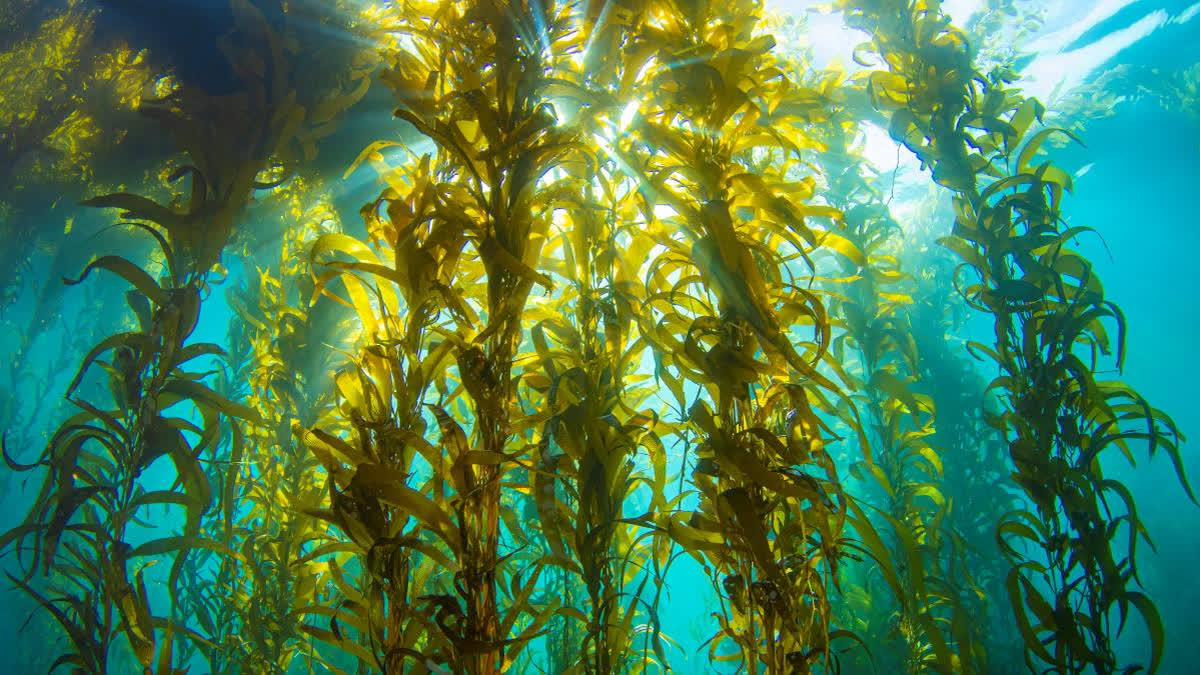New Delhi: Seaweed farming has the potential to deal with climate change impact, simultaneously its rich properties help cultivators to get better financial returns by selling as its biomass has multiple nutritional and medicinal values to be used in the pharmaceutical and food industry.
As per the Indian Council of Agricultural Research (ICAR), seaweed farming is a green technology with zero input which can act as an important mitigation measure for reducing the adverse impact of climate change and has the potential to earn carbon credits for the county.
Assistant Professor, Marine Biotechnology, Gujarat Biotechnology University, Dr Nitin Trivdi told ETV Bharat, "The seaweed farming is helpful to deal with climate change as these are photosynthetic plants which absorb CO2 from the environment for their growth. Second, it helps mitigate ocean acidification by absorbing CO2 from the ocean and increasing the pH of the seawater. These processes improve the environment and reduce the impact of climate change on marine ecosystems.”
"In order to address climate change issues, the ICAR-CMFRI, and CSIR-Central Salt and Marine Chemical Research Institute have identified potential sites for seaweed farming in 9 coastal States and 4 Union Territories of the country. The sites identified (384) were categorised into green zones (3999.37 ha), amber zones (14,076.77 ha), and blue zones (6,631 ha), with 24,707 hectares identified as suitable for seaweed farming," Indian Council of Agriculture Research annual report 2023-24 states.
Seaweeds have industrial importance due to the presence of sulphated polysaccharides like agar, algin, and carrageenan. Further seaweeds are rich in minerals which makes them a potential source of biostimulants. He said, "Seaweeds are a rich source of bioactive components which has applications in pharmaceutical, nutraceutical, cosmaceutical, food and agriculture industries".
United Nations Environment Programme Report 2023 says:
The Environment Programme (UNEP) recognises the growing global interest in seaweed farming as a potentially scalable ocean-based solution to climate change that may provide environmental and social co-benefits as part of the advancement of resilient and climate-smart aquaculture. As per the report, seaweeds absorb pollutants (nutrients including nitrogen phosphorous and heavy metals) in coastal waters.
UN Trade & Development:
Within a sustainable ocean economy, seaweed collection, culture, processing, and trade are one of the sectors with the most opportunities to achieve sustainable growth by 2030. Seaweed farming culture is closely linked to food security, income, livelihoods, and traditional knowledge of rural coastal communities, particularly for women and Indigenous Peoples.
Government’s initiative:
In a significant move, the Centre has notified the ‘Guidelines for Import of Live Seaweeds into India’. This initiative aims to bolster the development of seaweed enterprises as a key economic driver for coastal villages, ensuring livelihood sustainability and socio-economic upliftment of the fisher community while upholding environmental protection and biosecurity concerns at the core of all actions. Pradhan Mantri Matsya Sampada Yojana (PMMSY), the flagship scheme of the Government of India envisaged to revolutionise the seaweed sector, aiming to increase seaweed production of the country by over 1.12 million tonnes by 2025.
National Fisheries Development Board:
